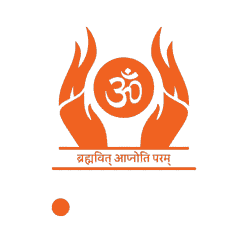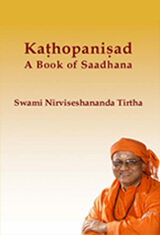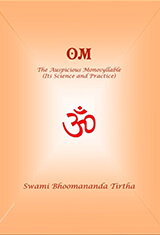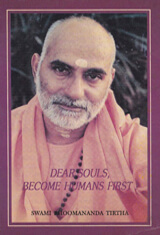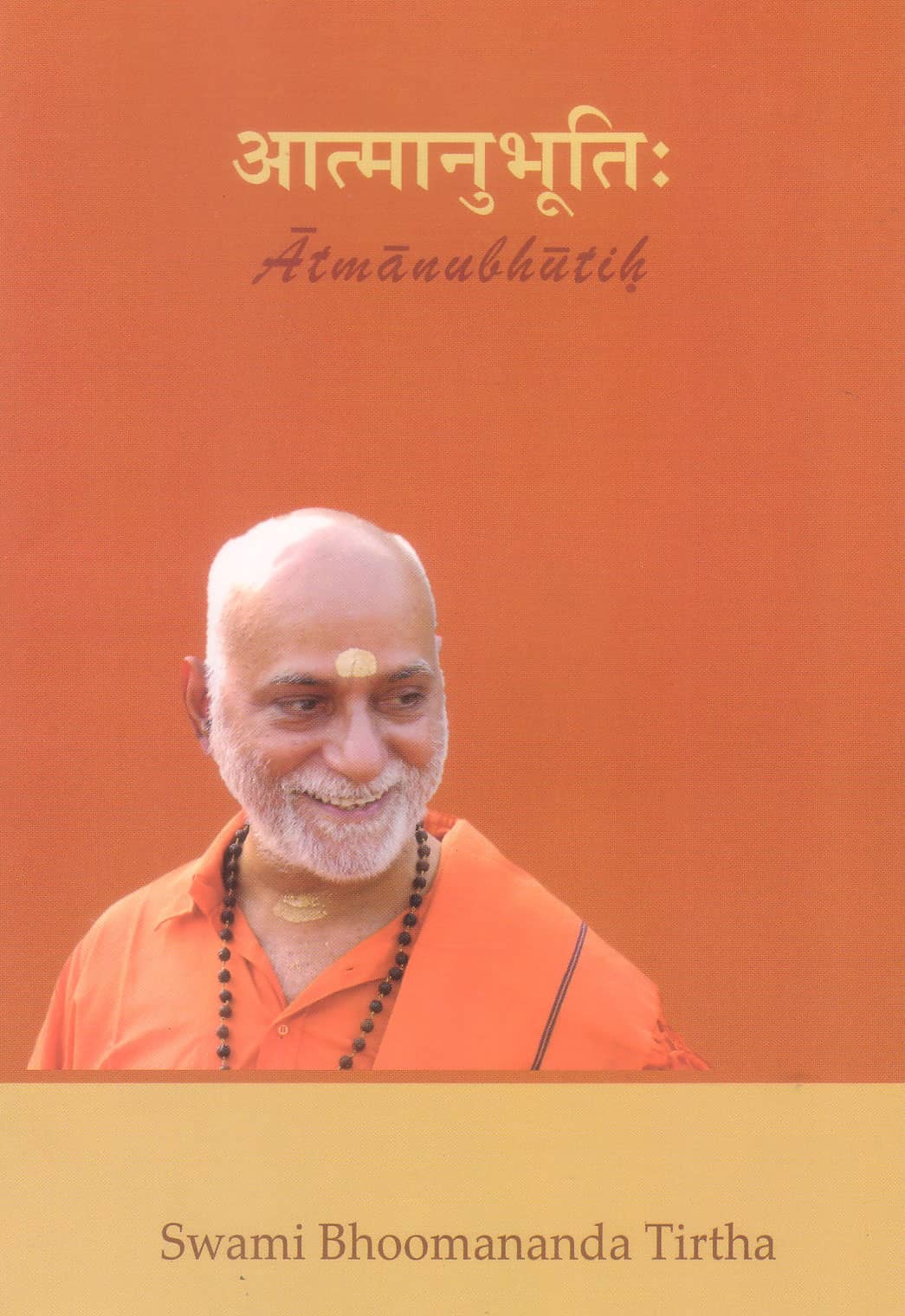Resources
Self-realization – How Long Should Sadhana Continue
Swami Bhoomananda Tirtha

These days, during the after-dinner satsangs Ma generally reads out selected paragraphs from biographies of Saints and Sages. Ma has been painstakingly searching out the portions that have some relevance to the difficulties faced by the seekers. Thus, the reading sessions help the seekers not only to know how the great men achieved their spiritual goal but also in understanding and correcting the values and attitudes, especially in overcoming the pre-conceived notions about spiritual pursuit. What is the correct sādhanā? How long should it continue? What is the actual goal? When will I achieve it? – All these doubts are raised during the discussion. Poojya Swamiji, graciously, addresses the seekers, throwing light on these matters.
We had been reading the book – “Living with the Himalayan Masters’’ by Swami Rama for some days now. We were evaluating the presentation – its validity, significance and application. There were some comments and counter comments on whatever is reported and at some point Satish asked a pertinent question. He was referring to me also. “Swamiji, was it necessary for you to do such protracted sādhanā ?” So, the question is whether the sādhanā is necessary or not.
It is necessary, Satish, for this reason: People generally go into spirituality from different backgrounds. They do not know what spirituality is. They do not know the goal; they do not know how to achieve that goal. When will the goal be achieved? What will follow the achievement? How will a man who has realized this, be? All these questions will, one after another, become relevant to the seekers gradually.
As I always mention, in all forms of sādhanā, you employ the mind. You encounter the mind. The mind alone produces agitation, hatred, desires, jealousy, impatience, intolerance and the like. So you are encountering your own mind’s reactions, its verdicts. In facing them, you are employing the mind alone. So, the whole sādhanā is resting on the mind. While you are thus engaged in that mind-based sādhanā, how will you get the clarity or the confidence you seek? Initially we have no idea of the goal. Later on the goal becomes clear and the attainment also becomes clear.
But the question is sure to arise again and again. You think, it is by sitting in meditation that we achieve the goal. In meditation, in that beautiful state of absorption, oneness may be achieved. But you wake up from meditation only to say, “I have the effect of meditation for half-an hour, one hour, or two hours. But thereafter the world overpowers me.” Why should the world possess you even after the meditation? So – this question comes again – is meditation the means, or is it something else?
Thus confronted by various hurdles the seeker comes to know that knowledge and clarity are the final goal. As Bhagavad Gita puts it –
ज्ञानेन तु तदज्ञानं येषां नाशितमात्मनः ।
तेषामादित्यवज्ज्ञानं प्रकाशयति तत्परम् ।।
jñānena tu tadajñānaṃ yeṣāṃ nāśitamātmanaḥ ।
teṣāmādityavajjñānaṃ prakāśayati tatparam ।।
(Bhagavad Gita 5.16)
When by proper jñāna the ajñāna effects are removed, then that jñāna reveals the supreme Truth. The Bhagavad Gita doesn’t stop there. Krishna continues to say …
तद्बुद्धयस्तदात्मानस्तन्निष्ठास्तत्परायणाः
tadbuddhayastadātmānastanniṣṭhāstatparāyaṇāḥ
(Bhagavad Gita 5.17)
– After coming to know of the supreme Truth, and intelligence becoming identified with the Truth, the Truth becomes the very Self. For this purpose he makes this knowledge a niṣṭhā. Taking refuge only in this knowledge, he transcends repetitive births and deaths.
ज्ञान-निर्धूत-कल्मषाः
jñāna-nirdhūta-kalmaṣāḥ
– All blemishes are washed off by knowledge. When is the seeker going to have this clarity and assurance that the blemishes have been washed off and when is he going to remain ‘himself’ at every point of time?
Santuṣṭaḥ satatam yogī yatātmā dṛḍhaniścayaḥ – the yogi is always a santuṣṭa. It is not that he is santuṣṭa (contented) only when he is undergoing samādhi – but every moment he has samādhi emerging in him.
Are you afraid that you will lose it? And what is the guarantee that you will not lose it? Is there any doubt? So, ultimately it comes to this stage:
भिद्यते हृदयग्रन्थिः छिद्यन्ते सर्वसंशयाः ।
क्षीयन्ते चास्य कर्माणि तस्मिन् दृष्टे परावरे ।।
bhidyate hṛdayagranthiḥ chidyante sarvasaṃśayāḥ ।
kṣīyante cāsya karmāṇi tasmin dṛṣṭe parāvare ।।
(Muṇḍakopaniṣad 2.2.8)
The hṛdaya-granthi is broken. What is this hṛdaya- granthi? “That I am a jīva. I have to achieve this. I have to achieve that.” Such kartṛtva and bhoktṛtva notions must go. And you should cease to be a jīva. The ahaṅkāra should go; ahaṅkāra not in the sense of pride and privilege; but something else, in the form of individuality.
Chidyante sarva-saṃśayāḥ – all the doubts should get extinguished. What is the ultimate doubt? “Am I the same as the supreme Brahman? Is the consciousness separate from this external world? Is not the world different from me? Or are both the same?” So, the world, the supreme reality and yourself – they have to become one. And this oneness should not be lost at any time. When are you going to have this assurance?
Thirdly, kshīyante ca-asya karmāṇi – all the karmas must get completely dissolved. Only when all the three are achieved, the clarity and fulfillment are possible. So, the sādhanā is to have this wholesome, impenetrable, unassailable state. The unassailable state will not come all of a sudden. Is sādhanā the means for it, and if so what kind of sādhanā? Is absorption the means for it? If yes, then what about when you wake up from the absorption? What is the difference between absorption and non-absorption? The world evolved from Brahman is causing no problem to Brahman. Then why should it cause problem to us? Should the world be problem to me? All these questions will come.
Mind is the cause of everything. Mana eva manuṣyāṇāṃ kāraṇaṃ bandha-mokṣayoḥ. You have read this sentence. You have heard about it. You have thought about it. But does it mean that in your own experience and realization the mind has been known as the cause of your bondage? And has the same mind now become the cause of liberation? So, this transition from ‘hearing and reading about Self’ to Self-experience, and from Self-experience to a stage of having no further need for an experience – is the sādhanā.
Ultimately it is knowledge. And can knowledge result from sādhanā? How can knowledge be had and how will the knowledge, once had, remain always operative? When will that threat to knowledge disappear? These ultimately become points of concern.
Sādhanā is to actualize what you know. You must have that actualization to such an abundant measure that you never feel threatened or fearful about the lack of it.
The focus should therefore lie on the mind and in its expansion. I am waiting for the day when you will be able to say, “Yes, my consciousness is independent. It is not dependent on the object”. This consciousness, being independent, is Satyam, Śivam and Sundaram! It is Truthful, Auspicious and Beautiful! Until this is realized the sādhanā continues.
Hariḥ Om Tat Sat
05 February 1998
(From the Book – Prabhata Rashmih Volume 1)

“Religion started from man, not from God; it is for man and not for God. It has therefore to end with man. It must conform to the needs of man’s own life here and succeed in fulfilling his inmost aspiration and urges.”
“This transition from ‘hearing and reading about Self’ to Self-experience, and from Self-experience to a stage of having no further need for an experience – is the sādhanā. ”
“Sādhanā is to actualize what you know. You must have that actualization to such an abundant measure that you never feel threatened or fearful about the lack of it. ”
“This consciousness, being independent, is Satyam, Śivam and Sundaram! It is Truthful, Auspicious and Beautiful! Until this is realized the sādhanā continues.”
you might be interested in

Swami Nirviseshananda Tirtha
269 – by Swami Nirviseshananda Tirtha – Realizing our Eternal Nature

Swami Nirviseshananda Tirtha
19 – Bhagavad Gita – Chapter 18 – by Swami Nirviseshananda Tirtha – Way to Freedom

 1774 views
1774 views

 Add to Favorites
Add to Favorites Add to Reading List
Add to Reading List
